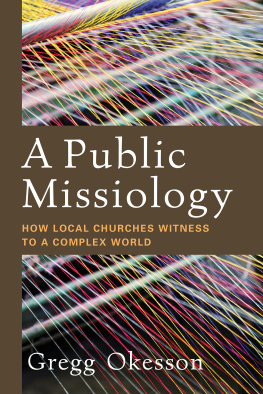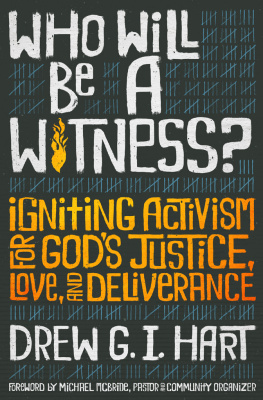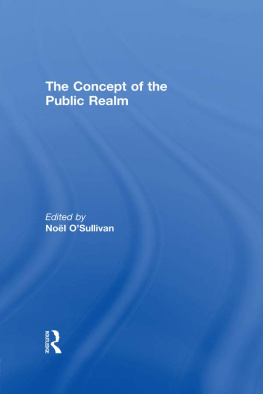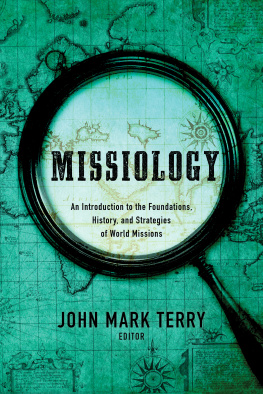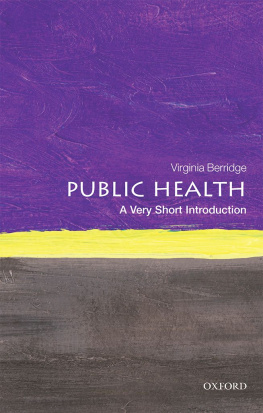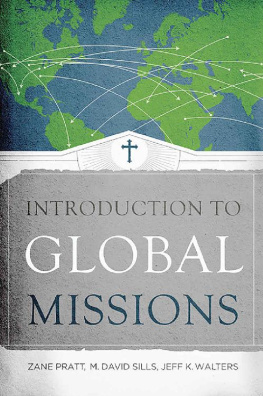Gregg Okesson - A Public Missiology: How Local Churches Witness to a Complex World
Here you can read online Gregg Okesson - A Public Missiology: How Local Churches Witness to a Complex World full text of the book (entire story) in english for free. Download pdf and epub, get meaning, cover and reviews about this ebook. year: 2020, publisher: Baker Publishing Group, genre: Religion. Description of the work, (preface) as well as reviews are available. Best literature library LitArk.com created for fans of good reading and offers a wide selection of genres:
Romance novel
Science fiction
Adventure
Detective
Science
History
Home and family
Prose
Art
Politics
Computer
Non-fiction
Religion
Business
Children
Humor
Choose a favorite category and find really read worthwhile books. Enjoy immersion in the world of imagination, feel the emotions of the characters or learn something new for yourself, make an fascinating discovery.
- Book:A Public Missiology: How Local Churches Witness to a Complex World
- Author:
- Publisher:Baker Publishing Group
- Genre:
- Year:2020
- Rating:5 / 5
- Favourites:Add to favourites
- Your mark:
- 100
- 1
- 2
- 3
- 4
- 5
A Public Missiology: How Local Churches Witness to a Complex World: summary, description and annotation
We offer to read an annotation, description, summary or preface (depends on what the author of the book "A Public Missiology: How Local Churches Witness to a Complex World" wrote himself). If you haven't found the necessary information about the book — write in the comments, we will try to find it.
Gregg Okesson: author's other books
Who wrote A Public Missiology: How Local Churches Witness to a Complex World? Find out the surname, the name of the author of the book and a list of all author's works by series.
A Public Missiology: How Local Churches Witness to a Complex World — read online for free the complete book (whole text) full work
Below is the text of the book, divided by pages. System saving the place of the last page read, allows you to conveniently read the book "A Public Missiology: How Local Churches Witness to a Complex World" online for free, without having to search again every time where you left off. Put a bookmark, and you can go to the page where you finished reading at any time.
Font size:
Interval:
Bookmark:
2020 by Gregg Okesson
Published by Baker Academic
a division of Baker Publishing Group
PO Box 6287, Grand Rapids, MI 49516-6287
www.bakeracademic.com
Ebook edition created 2020
All rights reserved. No part of this publication may be reproduced, stored in a retrieval system, or transmitted in any form or by any meansfor example, electronic, photocopy, recordingwithout the prior written permission of the publisher. The only exception is brief quotations in printed reviews.
Library of Congress Cataloging-in-Publication Data is on file at the Library of Congress, Washington, DC.
ISBN 978-1-4934-2238-8
Scripture quotations are from THE HOLY BIBLE, NEW INTERNATIONAL VERSION, NIV Copyright 1973, 1978, 1984, 2011 by Biblica, Inc. Used by permission. All rights reserved worldwide.
The appendix to this book is used with permission from the Public Missiology Working Group.
To the villages of Selare and Pahi in north-central Tanzania, and to my students at Scott Theological College in Machakos, Kenya:
You have led me on a journey deeper into the public nature of witness, and for that I am deeply grateful.
Cover
Half Title Page
Title Page
Copyright Page
Dedication
Preface
Introduction
Part 1: Public Witness
1. Why Congregational Witness?
2. What Publics? Where Publics?
3. The Missio Dei a Thick, Public Story
4. What Is Public Missiology?
5. Thick Congregational Witness
Part 2: Congregations and Public Witness
6. How to Study Congregations
7. Thick Doxology and Witness to LandAfrica Brotherhood Church, Machakos, Kenya
8. Thick Place and Witness to MontrealSt. Jax Anglican Church, Montreal
9. Thick Identity and Witness to All NationsBethel World Outreach Church, Nashville
Conclusion: How Local Churches Witness in a Complex World
Appendix: Public Missiology: A Brief Introduction by The Public Missiology Working Group
Bibliography
Index
Back Cover
T he seeds of this book germinated in 1998 within a couple of remote villages in north-central Tanzania. Until my family moved there, I had never really considered the nature of public witness. Like most Westerners, I thought of witness primarily as a personal enterprise, something one does with individuals. Of course, as a missiologist I had studied contextual theology and knew, at least conceptually, that the gospel moves into public spaces, but nothing in my education prepared me for what I would face. In the villages, I encountered a thickness to the public realm that defied any simplistic answers. In a classroom we could discuss the different realms of public life, such as ethnicity, clan, economics, and politics, but in the villages each of these intermingled with the others like the dust devils that skip and dance across the arid Maasai Steppe.
We moved to Tanzania to plant churches, but I quickly realized one could not do evangelism, nor discipleship, nor ecclesiology of any kind, without taking seriously the public realities surrounding the people. And the publics we encountered in the villages were not just a matter of academic deliberation but were something we experienced with our bodies, such as with malnutrition or disease. My family struggled with malaria, worms, tuberculosis, and other sicknesses along with daily challenges of nutrition. Early on I sought simple solutions to what I thought were relatively simple problems, only to realize that one of the reasons the publics were so virulent was due to the ways they interpenetrated one another, or to their thickness. I eventually began asking myself, How does church planting relate to poverty, or evangelism to health, or religion to development? I did not have good answers to those queries, but the questions lingered with me and resulted in this book.
After living in the village two years, my family moved to Kenya, where I taught theology and mission at Scott Theological College in Machakos for a decade. My students deepened this public trajectory through their questions in the classroom, along with sharing with me their lives and ministries outside in public spaces. During that time I also began studying local congregations. In the beginning I did it as part of my PhD studies. But I then realized something equally as dramatic as what I had learned in the villages: the thickness of the public realm was countered by a different kind of thickness found in congregations. At first I only saw the slightest glimmers of thickness within churches, but the more I studied them, I came to realize that all local congregations are filled with movements. I liken the thickness of local congregations to the delicate movements of diverse threads that weave in and out within the liturgy and sacraments of the church, and then outside into public spaces, and back inside again, in a never-ending knitting of dense fabric.
Of course, not all local congregations are thick. And not all churches are thick in the same way. However, instead of spending an entire book bemoaning the introversion or thinness of a local congregation, I have chosen to take a different course: to show how missiology helps us witness through movement, which I have likened to the threads of a dense fabric, and how local congregations do so within and for their surrounding publics.
As I have reflected on those years in Africa, I have come to see that many Western Christians, and especially those from my tribe (called evangelicals), love to approach complex, thick problems with simplistic, thin solutions. Some of this arises from our socioreligious background emanating from the Enlightenment, where our knee-jerk reaction is to retreat from the public realm altogether or attempt to solve complex social challenges with simplistic, individual answers (e.g., if only poor people would work harder). Hence, we eagerly rally around political leaders who reinforce our ideological positions (and may even attend our churches). Our reticence to talk about public witness also proceeds from our theological heritage of using Christology and soteriology to solve only individual, spiritual issues (such as sin management or where one will spend eternity) but not the redemption of public life. As Christians we do not possess a robust heritage of embracing complexity, or what I am calling thickness. Our understandings of salvation tend to go no further than the individual. Thus it is not surprising that the thinness of our faith does little to interpenetrate the thickness of the public realm, and that is as true for the context of large cities in North America as it was for my villages in Tanzania.
In this book I seek to accomplish three related goals. First, I want us to see complexity, or thickness, not as the enemy of the church but as our greatest ally. Second, I hope to demonstrate how thickness arises from different movements, and why missiology is so critical in highlighting various movements within the missio Dei to redeem the fullness of Gods world. Finally, I desire to show how congregations possess their own thickness, arising from different movements of thread, and how they use that weave of movement to witness to the public realm around the church.
Let me acknowledge a group of key dialogue partners who helped shape my early ruminations on this book. They are members of a working group on public missiology within the American Society of Missiology (ASM): George Hunsberger, Gregory Leffel, Charles Fensham, Robert Hunt, Hendrik Pieterse, and Bill Kenney. Hunsberger initially championed these discussions on public missiology with his presidential address at the ASM annual meeting in 2005. The subject was then picked up by Leffel during the 2016 ASM meetings. Since that time, our working group, led by Leffel, has been presenting papers, dialoguing, and attempting to parse what we mean by public missiology. This book is my attempt to do so and should in no manner reflect the consensus opinion of the working group. But I would be remiss to neglect their valuable influence.
Font size:
Interval:
Bookmark:
Similar books «A Public Missiology: How Local Churches Witness to a Complex World»
Look at similar books to A Public Missiology: How Local Churches Witness to a Complex World. We have selected literature similar in name and meaning in the hope of providing readers with more options to find new, interesting, not yet read works.
Discussion, reviews of the book A Public Missiology: How Local Churches Witness to a Complex World and just readers' own opinions. Leave your comments, write what you think about the work, its meaning or the main characters. Specify what exactly you liked and what you didn't like, and why you think so.

